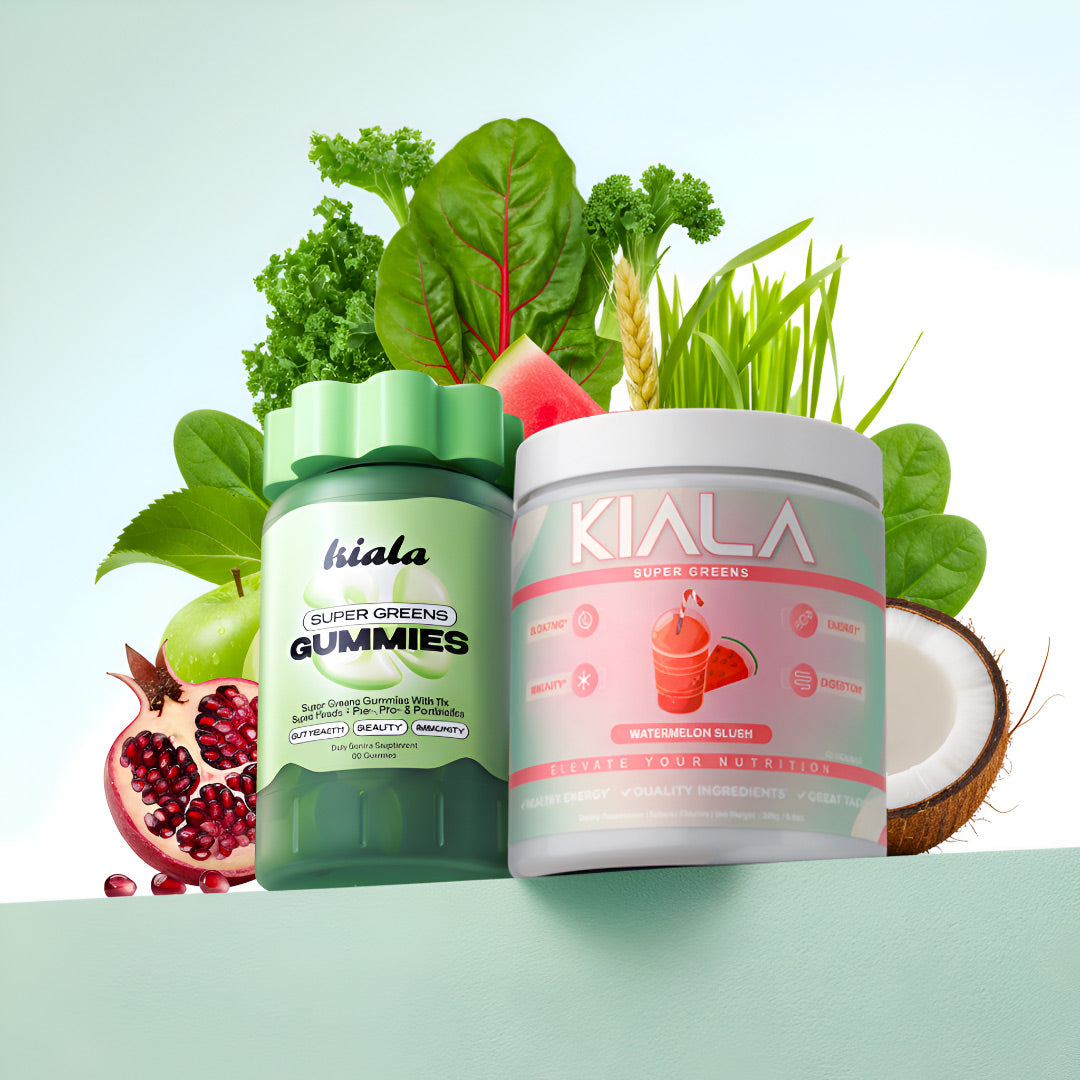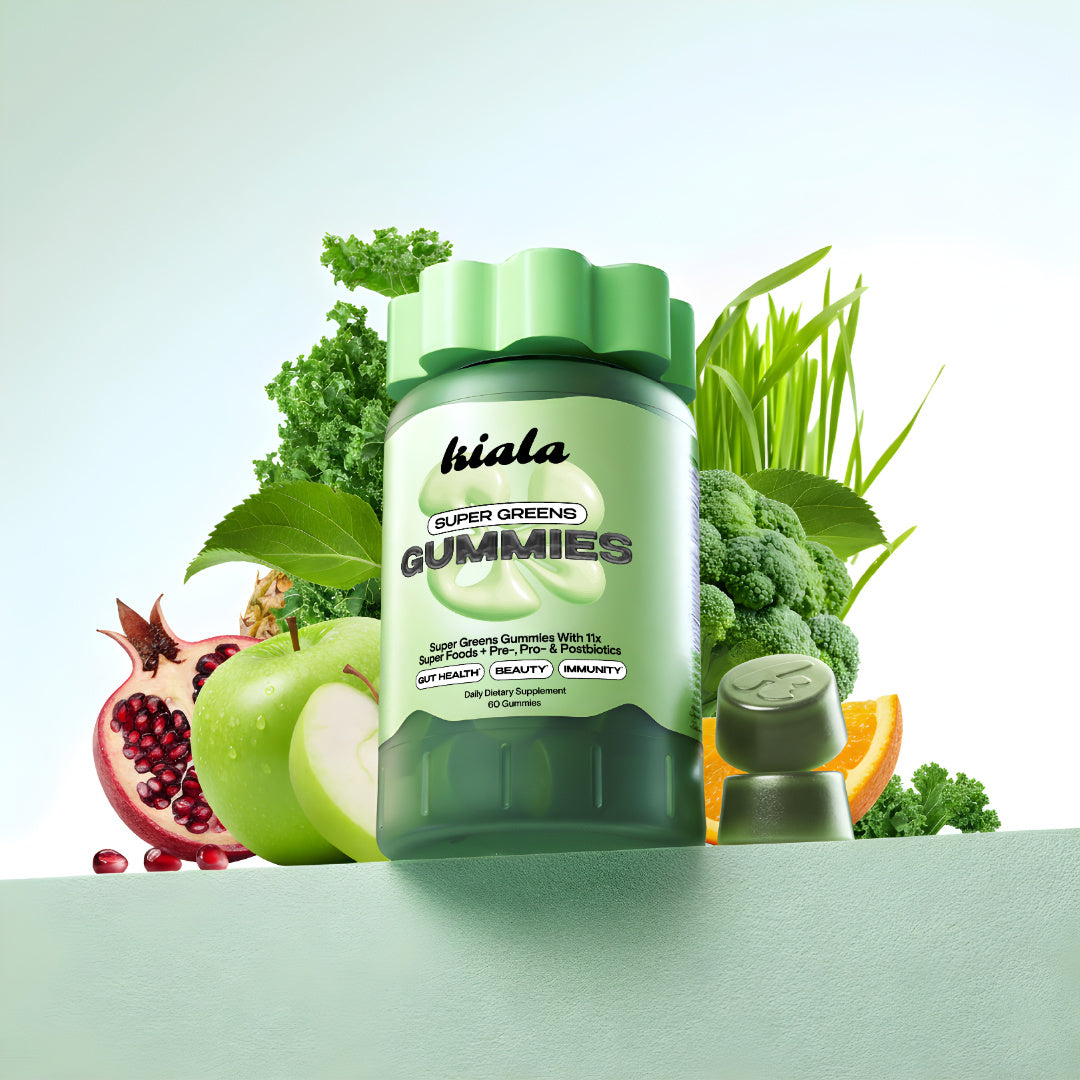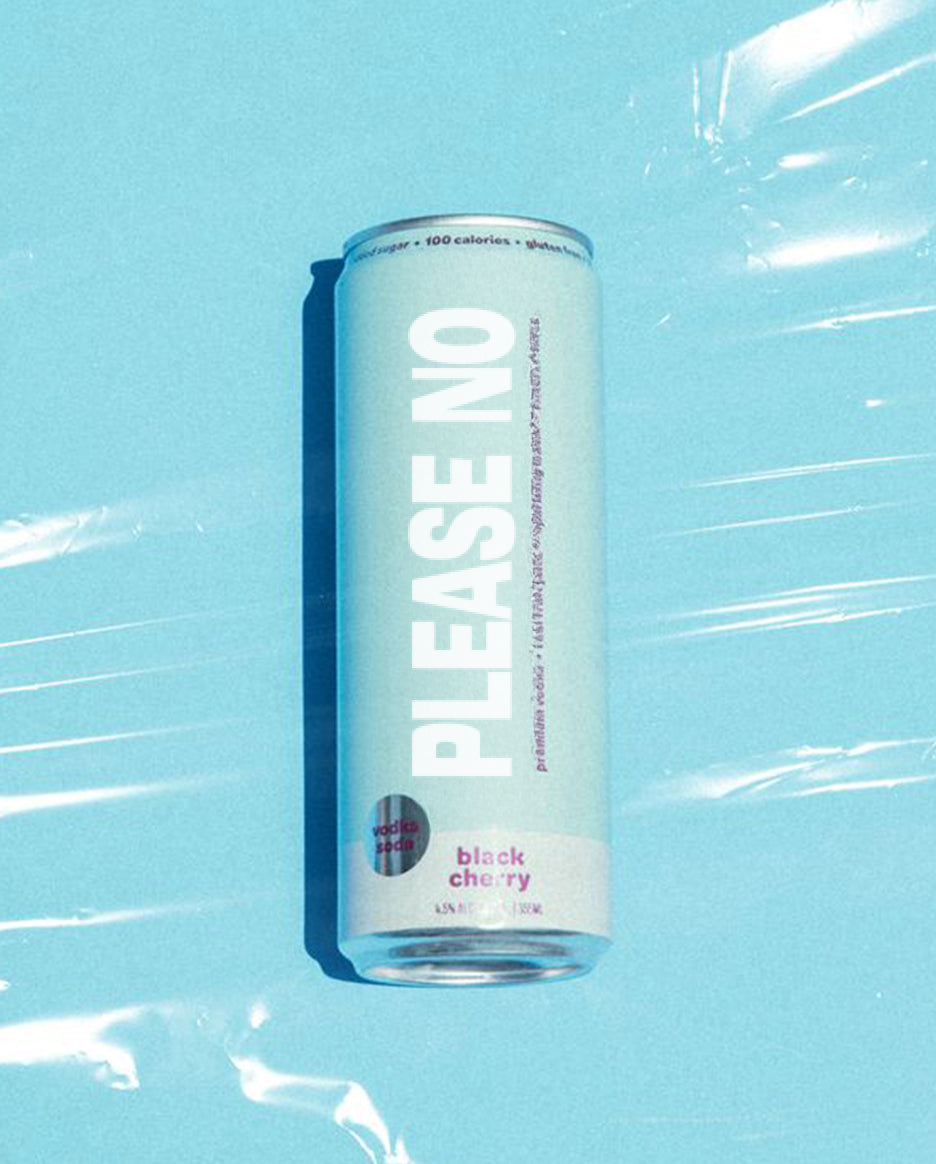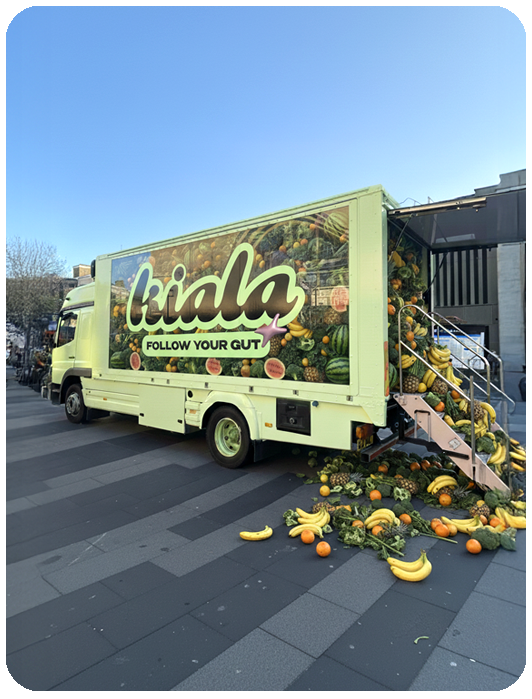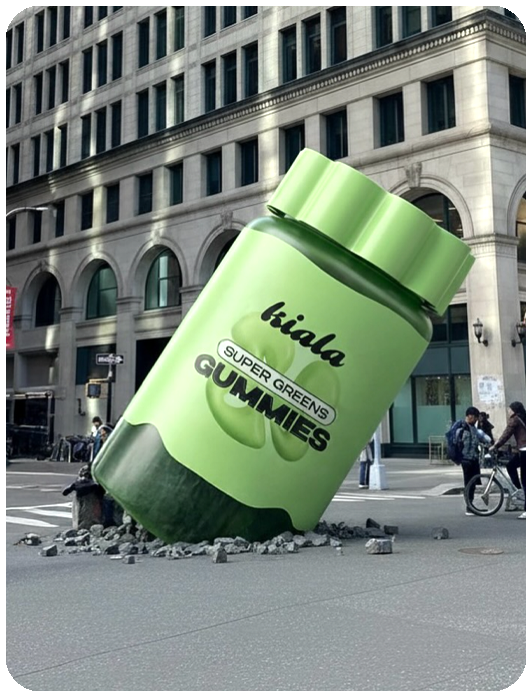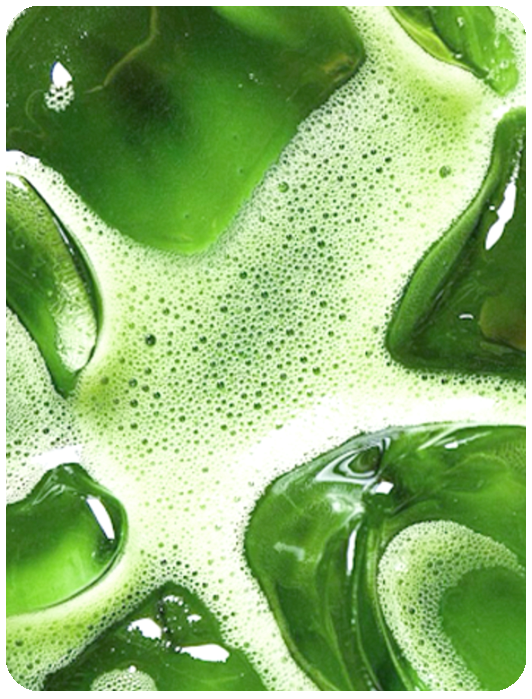Energy Drinks vs. Supergreens: A Tale of Two Stimulants
It's 3 PM. Your energy is crashing harder than the stock market in 2008, and you're staring at two options: the neon-colored energy drink promising to give you wings, or the green powder your wellness-obsessed friend keeps raving about. One looks like it could power a spaceship; the other looks like lawn clippings. Which one actually delivers sustainable energy without making you feel like you need another nap by 5 PM?
Spoiler alert: the answer might surprise your caffeine-addicted brain.
The Energy Drink Empire
Energy drinks are a $57 billion global industry built on a simple promise: instant energy when you need it most. But let's examine what you're actually getting for your $4 and potential dental bills.
The Typical Energy Drink Formula:
- 50-300mg caffeine (equivalent to 1-4 cups of coffee)
- 25-50g sugar (more than a Snickers bar)
- Artificial colors, flavors, and preservatives
- B-vitamins (often in synthetic, poorly absorbed forms)
- Taurine and other amino acids
Dr. John Higgins, sports cardiologist at UTHealth, explains: "Energy drinks provide a massive caffeine and sugar spike that triggers a stress response similar to fight-or-flight. While this creates temporary alertness, it's unsustainable and often followed by a significant crash."
The Crash Cycle Science
Blood Sugar Rollercoaster: That massive sugar hit causes insulin to spike, rapidly clearing glucose from your bloodstream. What goes up must come down—hard. Research published in PLOS ONE found that energy drink consumption led to blood sugar crashes within 2-3 hours, often leaving people more tired than before consumption.
Adrenal Stress Response: The high caffeine content triggers cortisol and adrenaline release. While this creates temporary alertness, chronic use can lead to adrenal fatigue and increased stress sensitivity.
The Tolerance Trap: Regular energy drink users develop caffeine tolerance, requiring increasingly larger amounts to achieve the same effect. This creates a dependency cycle that's hard to break.
The Hidden Costs
Beyond the immediate crash, energy drinks carry long-term consequences that most people don't consider.
Cardiovascular Impact: A study in the Journal of the American Heart Association found that energy drinks can cause irregular heart rhythms and elevated blood pressure, even in healthy young adults.
Sleep Disruption: The late-day caffeine intake from afternoon energy drinks can disrupt sleep cycles, creating a vicious cycle of fatigue and dependence.
Nutrient Depletion: High sugar intake depletes B-vitamins and magnesium—the very nutrients your body needs for natural energy production. You're literally robbing your future energy to pay for present alertness.
Enter the Supergreens Alternative
While energy drinks provide synthetic stimulation, quality supergreens offer sustainable energy through comprehensive nutrition. It's the difference between putting rocket fuel in your car versus premium gasoline—one might get you moving faster initially, but the other keeps your engine running smoothly long-term.
Natural Energy Compounds: Ingredients like spirulina provide complete proteins and naturally occurring B-vitamins essential for cellular energy production. Unlike synthetic vitamins in energy drinks, these nutrients are in forms your body actually recognizes and can use efficiently.
Steady Blood Sugar Support: Instead of spiking blood sugar, supergreens containing organic fruits and vegetables provide gentle, sustained energy without the crash. The fiber and nutrients help stabilize blood glucose levels rather than sending them on a rollercoaster ride.
Adrenal Support vs. Adrenal Stress: Compounds found in green tea extract, turmeric, and antioxidant-rich berries actually support healthy stress response rather than triggering fight-or-flight mode. Dr. Frank Lipman, functional medicine physician, notes: "Supergreens provide adaptogenic support that helps the body manage stress rather than adding to it."
The Cellular Energy Factory
Real energy comes from your cellular powerhouses—your mitochondria. Energy drinks bypass this natural system with artificial stimulation, while supergreens actually support mitochondrial function.
B-Vitamin Complex: Wheatgrass and spirulina provide naturally occurring B-vitamins in their bioactive forms. These vitamins are essential cofactors in cellular energy production, helping your body generate ATP (cellular energy currency) efficiently.
Antioxidant Protection: Energy production creates oxidative stress. The antioxidants in supergreens—from ingredients like camu camu, elderberry, and green tea extract—protect your mitochondria from this damage, supporting long-term energy capacity.
Mineral Support: Natural electrolytes from coconut water powder support proper hydration and nerve function, both essential for sustained energy without artificial stimulation.
The Taste and Convenience Factor
Let's address the elephant in the room: energy drinks taste like candy, while many people assume supergreens taste like punishment. This is where quality matters enormously.
Modern supergreens formulations have solved the taste problem without artificial additives. Flavors like Mixed Berry, Tropical Splash, and Watermelon Slush provide delicious options that make healthy energy choices as convenient as grabbing an energy drink.
The Morning Advantage: Starting your day with comprehensive nutrition sets up sustained energy rather than requiring afternoon rescue missions. With over 1 million women incorporating supergreens into their morning routines, it's clear that proactive energy support beats reactive caffeine fixes.
The Economic Reality
Energy Drink Math: At $4 per energy drink consumed twice weekly, you're spending over $400 annually on temporary energy fixes that potentially harm your long-term health.
Supergreens Investment: Quality supergreens providing 30 servings typically cost less than 10 energy drinks while offering comprehensive nutritional support that builds rather than depletes your natural energy reserves.
The Performance Difference
Cognitive Function: While energy drinks provide jittery alertness, the B-vitamins and antioxidants in supergreens support actual cognitive function and mental clarity without the crash.
Physical Energy: Natural compounds support sustained physical energy through improved cellular function rather than artificial stimulation that leaves you depleted.
Recovery Support: Anti-inflammatory compounds in quality supergreens help with recovery and reduce the oxidative stress that contributes to fatigue, while energy drinks increase inflammatory burden.
Making the Switch
Transition Strategy: If you're dependent on energy drinks, don't go cold turkey. Start by replacing one energy drink per week with supergreens while gradually reducing overall caffeine intake.
Timing Optimization: Use supergreens proactively in the morning rather than reactively when energy crashes. This supports natural energy rhythms rather than fighting against them.
Quality Matters: Choose organic supergreens formulations that provide comprehensive nutrition rather than isolated stimulants. Your body thrives on nutrient density, not chemical manipulation.
The Bottom Line
Energy drinks promise instant gratification but deliver long-term problems. Supergreens offer sustainable energy through comprehensive nutrition that actually improves your health while providing the energy you need.
Your body deserves better than artificial stimulation and sugar crashes. Choose energy sources that support your long-term vitality rather than borrowing against your future health.
The best energy solution is the one that works with your physiology, not against it. Sometimes the most effective choice is also the smartest one.
Sources:
-
Higgins, J. P., et al. (2010). Energy beverages: content and safety. Mayo Clinic Proceedings, 85(11), 1033-1041.
-
Grasser, E. K., et al. (2014). A randomized controlled trial of the effects of energy drinks on blood pressure and heart rate. PLOS ONE, 9(1), e87369.
-
Lipman, F. (2018). How to Be Well. Houghton Mifflin Harcourt.
-
Alsunni, A. A. (2015). Energy drink consumption: beneficial and adverse health effects. International Journal of Health Sciences, 9(4), 468-474.
-
Fletcher, E. A., et al. (2017). Randomized controlled trial and economic evaluation of a web-based weight loss intervention for community pharmacies. Journal of the American Heart Association, 6(9), e006154.
Ready to upgrade your energy game? Discover natural, sustainable energy that supports your health instead of depleting it. Join thousands of women who've ditched the crash cycle for consistent, clean energy that actually works.
Read more

Nutrient Timing: Does When You Take Your Greens Actually Matter? You've mastered what to eat, but now you're spiraling down the rabbit hole of when to eat it. Should you take your supergreens on an...

Supplement Shaming is So 2023: Why Smart Women Don't Apologize for Optimization Picture this: You're at brunch, casually mentioning your morning routine includes a greens powder, and suddenly Karen...
